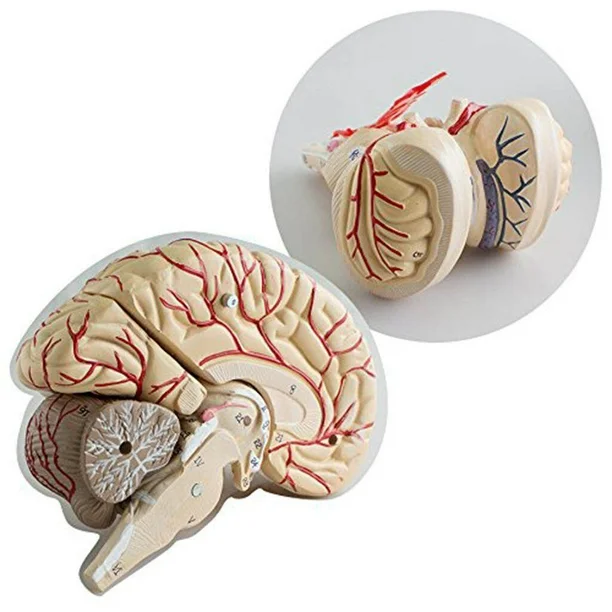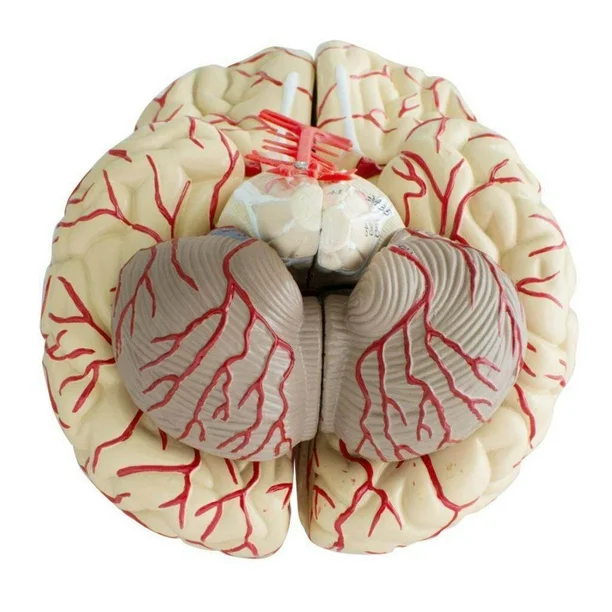Overview of Benign Brain Tumors
Benign brain tumors, unlike their malignant counterparts, do not invade nearby tissues or spread to other parts of the body, and they generally grow at a slower rate. This nature significantly lowers the risk compared to malignant brain tumors, though they can still be serious if they interfere with vital brain functions. According to Reference Blog2, about 700,000 Americans are living with a brain tumor, and 80% of primary brain tumors are benign. How long can you live with a benign brain tumor?The prevalence highlights the need for awareness and timely diagnosis, even though they are non-cancerous.
Types of Benign Brain Tumors
There are several types of benign brain tumors, each with its distinct characteristics and potential complications. Common types include meningiomas, which often grow slowly; pituitary adenomas, which can affect hormonal balances; and vestibular schwannomas, also known as acoustic neuromas, which might impact hearing and balance. Understanding these types helps in better diagnosis and personalized treatment plans as described in Reference Blog1, emphasizing the importance of detailed medical examination for correct classification and management strategies.

Factors Influencing Prognosis
When discussing the prognosis for individuals with benign brain tumors, several factors come into play.
Tumor Size and Location
The size and specific location of a benign brain tumor can impact a patient’s outlook. Large tumors or those situated in sensitive areas may press on brain structures, leading to symptoms that affect quality of life. Early detection allows for better chances of successful treatment.
Patient Age and Overall Health
Younger patients and those in good health typically fare better when it comes to prognosis. A fit body can often handle treatments better and recover more quickly.
Tumor Growth Rate
Slow-growing benign tumors typically lead to a better prognosis compared to those that grow quickly. Slow growth may mean fewer effects on brain function and less aggressive treatment needs.
Symptoms and Early Detection
Detecting benign brain tumors early is crucial for effective management and treatment.
Common Early Symptoms of Brain Tumors
Benign brain tumors often present subtle symptoms that can gradually escalate. How long can you live with a benign brain tumor?Common early signs include persistent headaches, which differ from typical headaches by their intensity and persistence. Other symptoms may involve vision changes, balance issues, or subtle memory troubles. These symptoms arise because the tumor presses against or disrupts the function of surrounding brain tissues.
Importance of Timely Diagnosis
Early diagnosis of a benign brain tumor can significantly influence the effectiveness of treatment and the overall prognosis. Detecting tumors early can prevent them from reaching sizes that could cause more serious neurological impairments. Medical professionals often use MRI scans to identify the presence and precise location of the tumor, facilitating timely and targeted intervention. Regular check-ups and awareness of the symptoms are key to catching these tumors before they develop further.

Treatment Options for Benign Brain Tumors
Benign brain tumors, while non-cancerous, can still require active management. How long can you live with a benign brain tumor?Treatment options vary based on the tumor’s characteristics, including its size, location, and growth rate. Understanding the available treatments helps in making informed decisions regarding the health management of these tumors.
Surgical Interventions
Surgery is a common approach to treating benign brain tumors. It aims to remove the tumor entirely, thereby alleviating symptoms caused by pressure on surrounding brain structures. However, the feasibility and extent of surgery depend on the tumor’s location. Surgeons operate with precision to minimize damage to critical brain areas. In cases where tumors are inaccessible or surgery risks are too high, partial removal may be considered.
Radiation Therapy
For tumors that are hard to reach surgically, radiation therapy offers a non-invasive alternative. This treatment uses high-energy rays to target and shrink the tumor. Techniques like Gamma Knife radiotherapy provide focused radiation, which is especially valuable in treating brain tumors located near sensitive structures. Radiation is sometimes used after surgery to treat any remnants and reduce recurrence chances.
Surveillance and Management Without Immediate Treatment
Not all benign brain tumors require immediate active treatment. Small, slow-growing tumors that don’t cause symptoms might be monitored over time. This approach, known as ‘watchful waiting’ or surveillance, involves regular MRI scans to track the tumor’s growth. Treatment may be initiated if significant growth or symptoms development occurs. This method is particularly beneficial for older patients or those for whom surgery presents too many risks.
Managing benign brain tumors involves a combination of techniques tailored to each patient’s specific condition. By closely monitoring the tumor and opting for the most appropriate intervention, patients can maintain quality of life and manage symptoms effectively.

Survival Rates and Statistics
Understanding long-term outcomes is vital for patients diagnosed with benign brain tumors.
Understanding 5-Year Survival Rates
Generally, benign brain tumors have favorable survival rates due to their non-invasive nature. Most people with these tumors live normal lifespans. How long can you live with a benign brain tumor?However, survival can vary based on the tumor’s characteristics like size and location, and individual health factors.
Comparing Survival for Different Tumor Types
Survival rates can vary significantly between different types of benign brain tumors. For example, meningiomas typically have a high survival rate, often matching the general population’s life expectancy when effectively managed. In contrast, more complex tumors, such as pituitary adenomas, may carry different survival statistics, especially if they affect hormonal balance or other critical brain functions. Knowing the type of tumor is crucial for understanding specific survival prospects.
Follow-up Care and Monitoring
Proactive follow-up care and consistent monitoring are critical for individuals with benign brain tumors. This section delves into why regular check-ups are essential and how to manage the long-term effects of treatment, all aimed at ensuring optimal health outcomes and quality of life.
Importance of Regular Check-ups
Regular medical check-ups are crucial to effectively monitor the stability or changes in a benign brain tumor. These check-ups typically involve MRI scans which track the size and growth of the tumor. Doctors might adjust treatment plans based on these observations. Detecting any changes early can lead to quicker interventions, which might prevent complications. Therefore, scheduling regular appointments with your healthcare provider is vital.
Managing Long-term Effects of Treatment
Even after successful treatment, patients might experience residual effects. These effects can range from physical challenges, like fatigue, to cognitive impairments such as memory difficulties. Rehabilitation programs tailored to individual needs help manage these effects. Additionally, supportive therapy sessions can address emotional or psychological challenges, enhancing overall well-being. It’s important to communicate openly with your healthcare team about any symptoms or changes in your condition for appropriate management and support.

Quality of Life Considerations
Quality of life is key for patients with benign brain tumors. Living with a tumor can affect your physical, emotional, and social well-being. It’s important to address these aspects to ensure a balanced life.
Psychological and Emotional Support
Coping with a brain tumor diagnosis can be tough. Emotional support is vital. Seek counseling or join support groups to share experiences. Talking to professionals or peers can make a big difference in your mental health. Patients also benefit from learning stress-reduction techniques, like meditation or mindfulness.
Rehabilitation and Returning to Normal Activities
After treatment, returning to everyday life is a goal for many. Rehabilitation services can help you regain skills affected by the tumor or its treatment. Physical therapy may restore movement, while speech therapy could help with communication. Occupational therapy can aid in regaining the abilities needed for daily tasks. With the right support, many individuals return to their normal activities, work, and hobbies, leading fulfilling lives post-treatment.
Conclusion
In conclusion, living with a benign brain tumor can open a path filled with uncertainty, yet hope is often at the forefront. Most people diagnosed with benign brain tumors find that they can lead relatively normal lives, especially when these tumors are monitored and managed appropriately. While a benign tumor is defined by its non-cancerous nature, it can still present challenges, such as symptoms, treatment side effects, or potential pressure on surrounding brain structures.
Understanding your specific type of tumor, treatment options, and the importance of regular medical check-ups is crucial. Advances in medical science continue to improve outcomes, ensuring that many individuals with benign brain tumors live long, fulfilling lives. It’s also vital to cultivate a strong support system, whether through loved ones or support groups, as emotional well-being plays a significant role in overall health.
Ultimately, while the diagnosis may initially be overwhelming, knowledge and proactive management empower patients. Every journey is unique, and many individuals share their stories of resilience and positivity in the face of challenges. Taking one step at a time, prioritizing self-care, and maintaining open communication with healthcare providers can greatly enhance quality of life. Remember, the presence of a benign brain tumor doesn’t have to define your future; instead, let it be a part of your story that inspires courage and strength.
